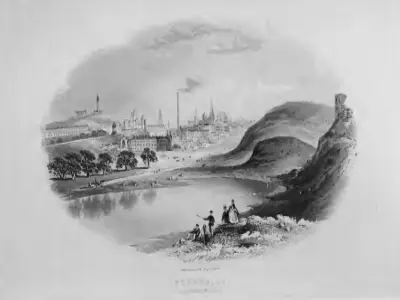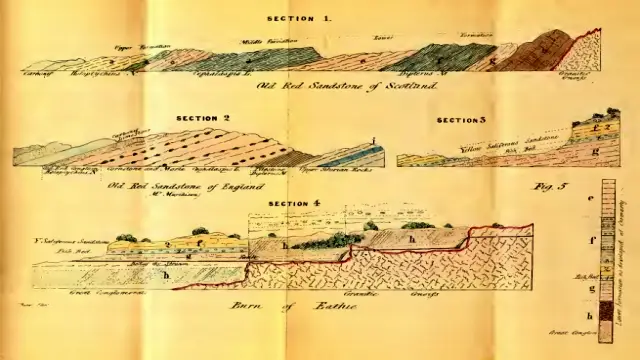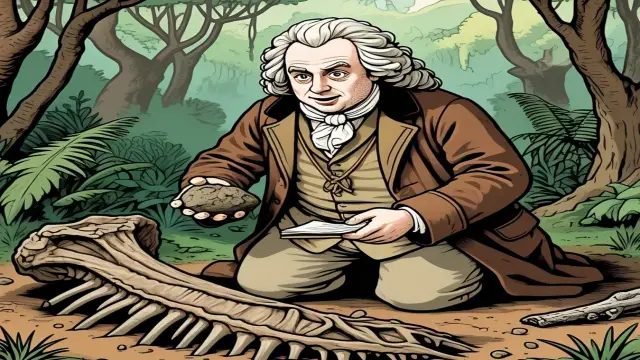Forgotten Genius: The Astonishing Life of Hugh Miller – Scotland’s Lost Scientific Hero
In the pantheon of Victorian scientists, names like Darwin, Faraday, and Lyell shine brightly. Yet, some giants have been unfairly forgotten by history. Hugh Miller, a Scottish stonemason turned writer, geologist, and theologian, is one such figure. His contributions to science, literature, and religion were immense in his time but are now overshadowed. This blog post dives into the life and legacy of this remarkable man—a true polymath who deserves rediscovery.
Early Life: A Humble Beginning
Hugh Miller was born on October 10, 1802, in Cromarty, Scotland. His father, also named Hugh, was a sea captain who tragically drowned when young Hugh was just five years old. Left widowed at eighteen, Harriet Miller raised her son and two daughters with help from her brothers, Uncles Sandy and James. Despite limited formal education, Hugh developed an insatiable appetite for reading. However, his schooling left him with poor spelling and grammar, though he excelled in handwriting—a skill that would later serve him well as a stonemason.

At age sixteen, Hugh apprenticed under his uncle-in-law, Donald Wright, a stonemason. Working in quarries was grueling and dangerous, but it sparked his lifelong love for nature. By the end of his apprenticeship in 1822, Hugh had become disciplined, skilled, and deeply reflective. These traits would define his future achievements.
From Stonemason to Writer
After moving to Edinburgh in search of work, Hugh witnessed firsthand how many laborers squandered their wages on drink and gambling. Disillusioned, he returned home to Cromarty, where illness forced him to rest. During this period, he began writing poetry and exploring religion. In 1828, he made a list of ambitious goals, including studying architecture, painting, and even writing a book about the Psalms.

By 1830, Hugh had published his first volume of poetry. A local woman, Mrs. Fraser, wrote to her daughter Lydia about the “literary pretensions” of Cromarty, mentioning the stonemason who wrote poems and essays on herring fisheries. When Lydia visited, she met Hugh—a tall, red-haired man of immense strength and humility—and was captivated. But Hugh, ever the gentleman, resolved to improve his station before pursuing romance.
Rise to Prominence
In 1834, Hugh accepted a position as an accountant at a bank in Linlithgow. Around the same time, he began corresponding with Lydia Fraser and working on his first prose piece, Scenes and Legends in the North of Scotland. Published in 1835, the book drew praise for its vivid descriptions of Scottish landscapes and folklore. Encouraged by its success, Hugh married Lydia in 1837.

One chapter of Scenes and Legends focused on geology, catching the attention of prominent scientists. Hugh’s fascination with fossils grew, leading him to make groundbreaking discoveries in the Old Red Sandstone—a geological formation long thought barren of fossils. His findings challenged prevailing beliefs and earned him widespread acclaim.
The Old Red Sandstone: A Masterpiece
Hugh’s most famous work, The Old Red Sandstone; or New Walks in an Old Field (1840), remains a classic of geological literature. What sets it apart isn’t just its scientific rigor but also its poetic prose. Hugh urged working men to better themselves through hard work and education, reflecting the values of his era. While his political views may seem outdated today, his descriptive writing is timeless.

Renowned geologist William Buckland once remarked, “I would give my left hand to possess such powers of description.” Hugh’s ability to blend practical experience with eloquent language made his work accessible and inspiring.
A Man of Many Talents
Beyond geology, Hugh wrote extensively on religion, politics, and social issues. As editor of the religious newspaper The Witness, he championed the rights of ordinary people while opposing radical movements like Chartism. His writings often reflected the tension between faith and science, a struggle that haunted him personally.
Among his other notable works is First Impressions of England and Its People (1847). Contrary to expectations, this book offers a beautifully crafted account of English society, filled with insight and grace. Hugh’s prose is so musical that it feels almost poetic—a testament to his extraordinary talent.
Tragic End and Lasting Legacy
Sadly, Hugh’s later years were marked by declining mental health. He feared for his family’s safety and struggled to reconcile his scientific and religious beliefs. On Christmas Eve 1856, he took his own life, leaving behind a poignant note to his beloved wife, Lydia.
His death shocked the scientific and literary worlds. Figures like Charles Dickens and John Ruskin sent condolences, and thousands attended his funeral in Edinburgh. Though largely forgotten today, Hugh Miller’s impact endures. His discoveries reshaped our understanding of Earth’s history, and his writings continue to inspire readers worldwide.
Why Hugh Miller Matters Today
Hugh Miller reminds us of the power of perseverance and curiosity. Despite humble beginnings, he rose to prominence through sheer determination and intellectual rigor. His story challenges us to recognize overlooked heroes of the past and celebrate their contributions.
If you’re intrigued by Hugh Miller, I highly recommend visiting the Discover Hugh Miller website for more information. And don’t miss The Old Red Sandstone—it’s still in print and well worth your time!
Final Thoughts
Hugh Miller’s life is a testament to the enduring human spirit. Whether carving stones, penning poetry, or uncovering ancient fossils, he approached every task with passion and precision. Let’s honor his memory by ensuring his name isn’t lost to obscurity. After all, great minds deserve recognition.

